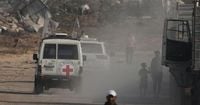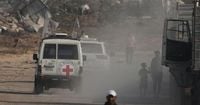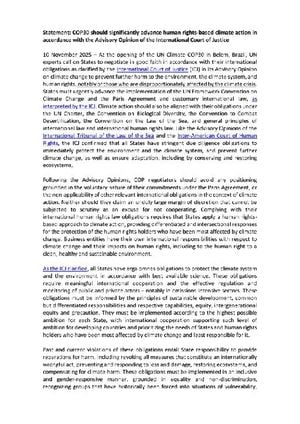Jared Kushner, the son-in-law of former U.S. President Donald Trump and a key adviser during his first administration, landed in Israel late Sunday night, November 9, 2025, for a series of high-stakes, unannounced meetings. By Monday afternoon, Kushner was sitting across from Israeli Prime Minister Benjamin Netanyahu in West Jerusalem, joined by Strategic Affairs Minister Ron Dermer and Aryeh Lightstone, a senior adviser to Trump’s special Middle East envoy Steve Witkoff. The meeting, which took place at Netanyahu’s office, signaled a renewed American push to shepherd the next phase of a fragile ceasefire agreement in the Gaza Strip.
According to Israeli media reports cited by Reuters and Channel 12, the agenda centered on the implementation of Trump’s 20-point peace plan for Gaza—a blueprint that has become the focus of intense international attention. The first phase of the agreement, which took effect on October 10, 2025, involved a carefully orchestrated exchange: Hamas released 20 Israeli hostages alive and returned the remains of 26 out of 28 individuals, most of whom were Israeli citizens. Yet, as Israeli authorities revealed, one of the bodies received in the exchange did not match any of their listed captives, raising difficult questions about the fate of the remaining hostages and the accuracy of the lists exchanged between the parties.
The second phase of the deal, now at the center of diplomatic wrangling, is even more ambitious—and contentious. It calls for the rebuilding of Gaza, devastated by over two years of conflict, and the establishment of a new governing mechanism that would explicitly exclude Hamas from power. The plan also envisions the deployment of an international force in Gaza to oversee disarmament and maintain security, a step that many in Jerusalem see as essential for lasting peace, but one that Hamas is widely believed to oppose.
In fact, according to statements from Israeli officials reported by Kan News and other outlets, the Israeli government suspects that Hamas is deliberately dragging its feet on the return of the remaining deceased hostages. The motive, they say, is to avoid the disarmament process set to begin in the second phase of the ceasefire. Instead, Israeli authorities argue, Hamas is using the delay to reassert its control over areas from which the Israel Defense Forces (IDF) have withdrawn, hoping to strengthen its bargaining position in future negotiations about Gaza’s reconstruction.
For Netanyahu, the stakes could hardly be higher. The prime minister is currently embroiled in an ongoing corruption trial, but on Monday, judges accepted his request to cancel his scheduled testimony, citing the “urgent diplomatic meetings” with Kushner and the U.S. delegation. The legal reprieve underscored just how critical the current round of talks is, both for Netanyahu’s political future and for the broader prospects of peace in the region.
Kushner’s involvement marks a return to the diplomatic spotlight for a figure who played a pivotal role in shaping Trump’s Middle East policy, including the Abraham Accords that normalized relations between Israel and several Arab states. This time, he is joined by Steve Witkoff, Trump’s special Mideast envoy, and Lightstone, both of whom are credited by Israeli Channel 12 with helping to broker the current ceasefire agreement. Their presence in Jerusalem highlights the enduring influence of Trump-era officials in regional diplomacy, even as the U.S. presidency has since changed hands.
The humanitarian toll of the conflict remains staggering. According to figures from Gaza’s Health Ministry, cited by multiple outlets, Israeli military operations since October 2023 have killed more than 69,000 people and injured over 170,600. These numbers paint a grim backdrop to the negotiations, fueling both international pressure for a durable peace and skepticism about the prospects for real change on the ground.
The first phase of the ceasefire, while offering hope, was fraught with complications. The exchange of hostages and prisoners was a delicate process, and the discovery that one of the returned bodies did not correspond to any known Israeli captive has added a layer of uncertainty and pain. Families of the missing and deceased are left in limbo, awaiting answers that may not come soon. Meanwhile, the political calculus in both Israel and Gaza remains volatile.
For Israel, the challenge is twofold: ensuring the safe return of all hostages and securing a future in which Hamas no longer poses a military threat. The deployment of an international force, as envisioned in Trump’s plan, is seen as a way to prevent Hamas from regrouping and rearming. However, such a force would require broad international buy-in and a clear mandate—no small feat in a region where foreign intervention is often viewed with suspicion.
Hamas, for its part, appears determined to maintain its relevance. By delaying the release of the final hostages and seeking to reestablish its authority in areas vacated by the IDF, the group is signaling that it will not be sidelined easily. According to Israeli officials, this strategy is aimed at maximizing leverage in upcoming negotiations over Gaza’s reconstruction—a process that will determine not just who governs the territory, but how billions in international aid are spent.
As the talks continue, the broader international community is watching closely. The rebuilding of Gaza, the establishment of a new governing mechanism, and the handling of the remaining hostages are all flashpoints that could either pave the way for a new era of stability or plunge the region back into violence. The involvement of high-profile figures like Kushner and Witkoff reflects both the complexity of the task and the determination of some actors to see it through.
The coming weeks will be decisive. If the second phase of the ceasefire can be implemented as planned, it could mark a turning point in the long and bloody history of the Israeli-Palestinian conflict. But as recent events have shown, even the most carefully negotiated agreements can unravel in the face of mistrust, political maneuvering, and the unpredictable realities on the ground.
For now, all eyes remain on Jerusalem, where the next moves by Kushner, Netanyahu, and their counterparts will shape the fate of millions. The hopes and anxieties of families on both sides hang in the balance, caught between the promise of peace and the shadow of past disappointments.





